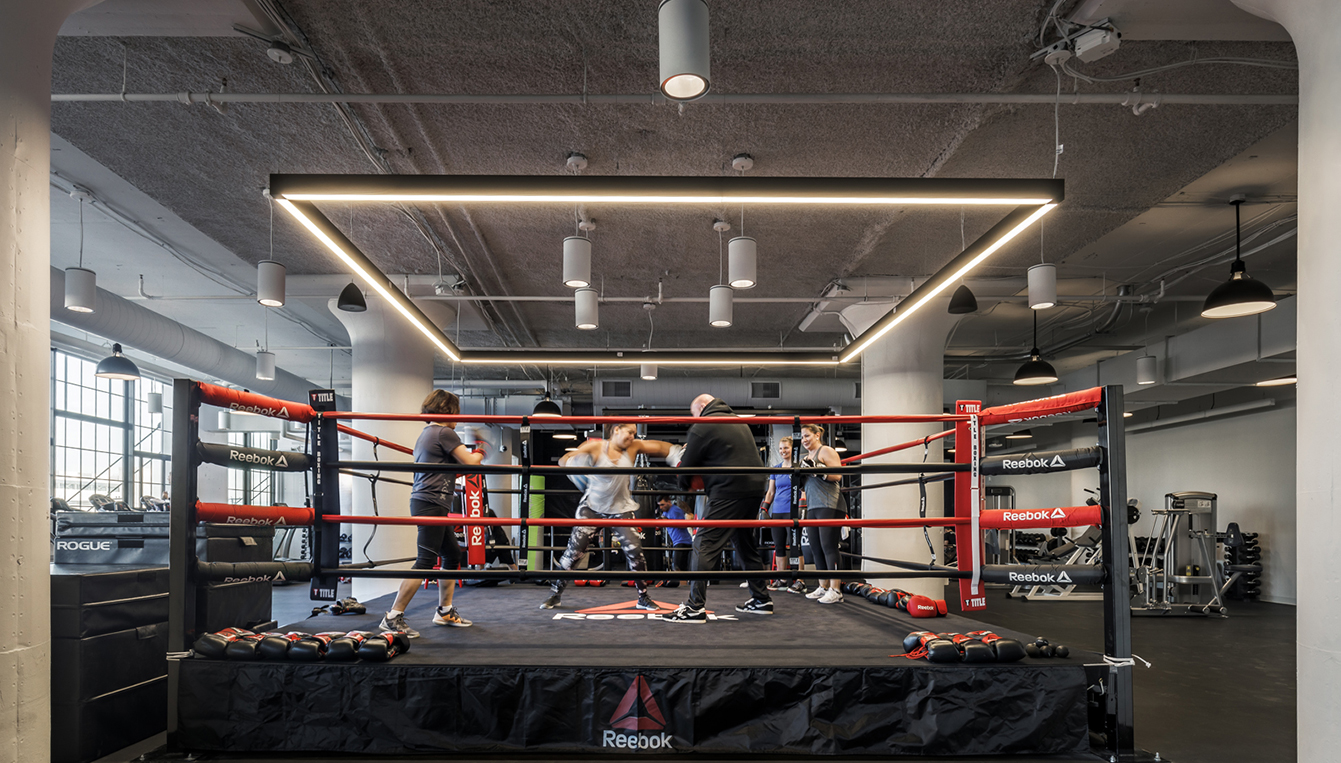Terence M. Tyson
Mid-Atlantic Office | Leader
Principal

We receive a lot of calls these days from unhappy homeowners and office tenants, struggling to coexist alongside a fitness center within their building. Jarring noise from dropping weights, thumping bass from spin and aerobic classes, and continual clatter and impact sound caused by treadmills and other equipment are a source of headaches for many trying to live or work adjacent to these facilities. Successful control of this type of noise requires careful planning and often some special construction techniques, however booming, low frequency sound caused by dropping weights and medicine balls is extremely difficult to contain under the best of circumstances. Neighbors above, adjacent, and especially below, will often find the situation intolerable.
Acentech has studied a number of cases, inevitably after a new fitness facility has moved in to a building and complaints from neighboring residents have come pouring in. We have found that although improvements can often be made to reduce noise transfer in these difficult situations, there is sometimes no solution to insure harmonious relations between gyms and their neighbors.
Often, the offending noise issue involves only high levels of music, or low intensity impact related sound – as is often associated with treadmills, dance or spin classes. Resolution of these problems is usually feasible though it requires upgrading walls or floor / ceiling assemblies to something considerably more robust than standard residential or commercial office construction.
Other times, periodic high amplitude disturbances come from dropping free weights or stacks of plates in weight lifting machines, or from the more violent impact associated with classes which encourage dropping or throwing weights or medicine balls. Of course, it’s a good idea to not locate such a facility directly above a sound sensitive neighbor, however, we have also found that noise problems can extend to spaces adjacent to, or above the exercise facility – and sometimes several floors above, even if the gym is located on grade.
Heavy impact from dropping weights can shake the building structure, excite natural frequencies, and produce vibration and audible noise in all directions. Some relief can be found by employing resilient materials to decouple exercise equipment from the building slab, however even thick resilient underlayments which are specially designed for athletic room applications cannot always compensate for the effect of heavy impact on lightweight building structures. Some building types are just not ideal candidates for gyms sharing space with residences or commercial offices, due to lightweight steel structure, less massive floor slabs and uncorrectable flanking conditions. We have found some situations involving heavy impact activity which defy satisfactory solution.
For example, in an older masonry building with 5” or greater concrete floors, treadmills might be successfully located above office space without complaint, provided an appropriate resilient fitness flooring system can be incorporated in the gym and a spring supported, heavy secondary barrier ceiling can be added to the office space below.
On the other hand, when a high intensity workout facility moved into grade level retail space in a typical suburban low rise office building directly below a sensitive commercial tenant, the results were not as good. Although a number of complaints related to loud music could be addressed by improved sealing of sound flanking paths through duct penetrations, and along the common curtain wall facade, introduction of resilient fitness flooring products were not successful in abating the effects of dropping free weights on the grade level building slab, as the heavy impact shook the lightweight structure, generating audible noise throughout the building.
Insure congenial coexistence through careful consideration of location and building structure before introducing a fitness center – in particular, a high intensity or weight lifting facility – into your building. Ideally, locate such a space on grade or below, away from all residences and sensitive offices, but be aware that sound and vibration can travel in all directions – both vertically and horizontally throughout the building. Plan on significant upgrades to wall and ceiling types at minimum, and assume resilient or floating floor details will likely be required. Be aware, that in some cases, such facilities just may not be able to coexist with sensitive neighbors.